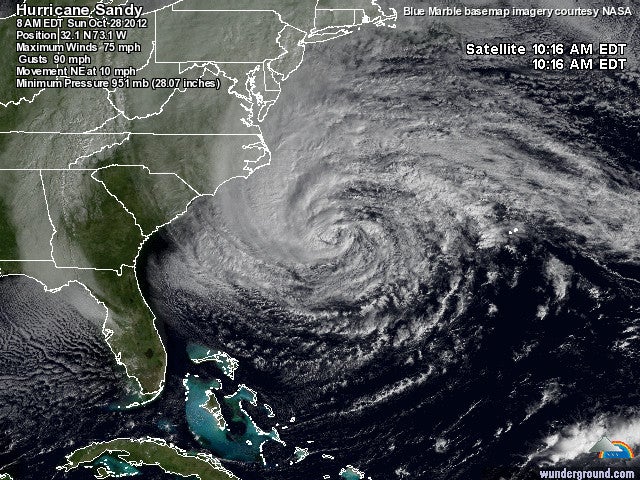The Dictionary Of Hurricane Sandy: Landfall
A lot of meteorological terms will be thrown around for the next few days. We're here to define them so you can understand what's going on. Welcome to the Dictionary of Hurricane Sandy.

Landfall
Noun. Pronunciation: [ˈlæn(d)-ˌfɔl]
Landfall is a simple but misleading term. The proper definition, for a tropical or subtropical storm like our new friend Hurricane Sandy, is that when the eye of the storm passes over land, it is classified as “making landfall.” This is important not because the eye is dangerous–indeed, the eye of a hurricane has comparatively light winds and mild weather–but because of the feared eyewall. The eyewall is a ring of horrific thunderstorms surrounding the eye, and it’s the eyewall we have to be scared of. And if a storm makes landfall, we’re going to have to deal with the eyewall.
In fact, the eyewall can actually hit land without the hurricane (or typhoon) “making landfall,” if the actual eye stays offshore. That’s called a “direct hit,” and it can be just as damaging as if the storm had made landfall. That’s all to say that if a hurricane doesn’t make landfall, it doesn’t mean it’s not a fantastically damaging storm. A few days ago, Sandy made landfall in Cuba and Jamaica–but it was Haiti that was hit hardest, with dozens of reported deaths.
At the time of writing (11:24 a.m. EST on Monday), Sandy is expected to make landfall, probably in New Jersey and probably near Atlantic City, between 6:00 p.m. and 10:00 p.m. on Monday night. Dr. Jeff Masters of Weather Underground says: “It is clear that Sandy is not going to pull its punch, and this superstorm is going to deliver a punishing multi-billion dollar blow to a huge area of the Eastern U.S.”
On that fun note, we’ll continue our Dictionary as long as we have power!